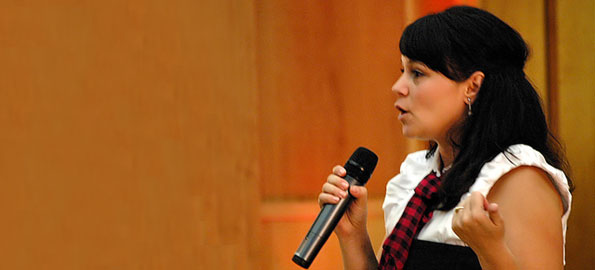What really happened when Little Red Riding Hood met the Wolf
I wish this were a fairy tale but sadly, it’s all too true. Every so often my white bread world is, to quote a British friend, “gobsmacked” (shaken, astonished, shocked) and this was the case recently when I attended a workshop on the issue of human trafficking in Canada. The event was sponsored by the Downtown East Project and hosted by the Steps to Change Diversion Program. Mill Courtland Community Association in conjunction with the Waterloo Region Police Services, the Bylaw Enforcement Division of the City of Kitchener, along with other community associations, are partners in an attempt to alert the public and various levels of government to the prevalence and severity of human trafficking. It’s an issue that largely flies under the radar of most citizens though I hope this will change in the near future as its cost in human terms is incalculable. Human trafficking is different from human smuggling. According to the RCMP, human trafficking involves the recruitment, transportation or harbouring of persons for the purpose of exploitation (typically as sex trade workers for forced construction labour) whereas human smuggling is a form of illegal migration involving the organized transport of a person across an international border for money.

Timea Nagy – Photo Credit: www.walk-with-me.org
Timea Nagy is a survivor of human trafficking and speaks to audiences in Canada and internationally about her experience. It is harrowing to listen to. Timea first became a victim of trafficking when she lived in Hungary. She was looking for a way to make money to help pay debts and was approached by a woman who offered her an opportunity to come to Canada where she could work as a baby sitter. The woman seemed sincere and offered Timea a contract written entirely in English. Timea neither spoke nor read English but trusted the woman. Upon arrival in Canada she was kept at Customs and questioned by officers who were seeing many Eastern European women entering the country under false pretenses. The officers, through an interpreter, explained the contract to her. She was expected to work as an exotic dancer and Timea, disoriented, exhausted and confused was just beginning a saga that would forever change her life.
She was sent back to Hungary but not before meeting up with members of the crime ring sent to meet her. They informed her of her debt incurred through the plane ticket and how she was to pay it back. That night she was taken to a strip club and raped. This was the start of the intentional dehumanization process used to control her mind and her body. Threats to her family in Hungary were made and though she was returned to Hungary, the threats continued in her home country. Feeling trapped, she returned to Canada to work to pay off her debt to the criminal organization. This world was completely foreign to her, literally and metaphorically. Timea, in her own words, was a good girl, whose mother was a police officer and Timea lived a fairly sheltered life. She was completely unprepared for the life she was to face. As she tells it, it was almost impossible to pay the debt because she was charged for ‘expenses’ such as $360.00 for an oil change or $560.00 to replace the headlight for the car used to take her to the club. If she or any of the other girls was late being picked up for their work shift (11 am to 2 am the following day) they were charged $100. 00 per minute. Girls like Timea were afraid to go to the police as some had bad experiences in their country of origin. They were broken down psychologically, almost as one in a prison camp, their dignity was stripped away and they did whatever they were told for fear of retribution but also, because many had lost the will to fight back. They were strangers in a strange land and this sense of fear was used as a form of manipulation and control.
Police forces at all levels have joined together to pursue, capture and prosecute those who traffic in human slavery. This is an international battle as criminal gangs, organized for this specific purpose, generate huge profits that cross borders every day. Many countries are moving forward with legislation and police resources but it’s not easy to get convictions if the victims are too traumatized to come forward or are kept virtual prisoners in motel rooms across the country, driven to strip bars or construction sites where few questions are asked.
Locally, the hope is to create a task force including enforcement groups and those providing recovery and support to develop a comprehensive action plan and strategic approach to help victims and also reduce the instances of this criminal activity.
We often think that slavery no longer exists but, having spent a day learning about human trafficking, it’s clear this evil continues to thrive in societies around the world. If you’d like to learn more, visit some of the links listed below and help join the battle against human trafficking.
I think you’ll be gobsmacked as well. It doesn’t feel good does it?
Additional Resources
- Walk With Me – Timea Nagy
- I’m Not For Sale – Human Trafficking National Coordination Centre, Canada
- An Overview of Trafficking in Persons – Canada
Author: Frank Johnson is a regular guest writer for Smart on Crime in Waterloo Region. Frank is a retired principal with the local Catholic school board, a dad, and sometimes runner who possesses an irreverent sense of humour that periodically gets him in trouble. He lives in Waterloo, Ontario.
Frank Johnson’s writing reflects his own opinions and do not necessarily reflect the views or official positions of the Waterloo Region Crime Prevention Council.
